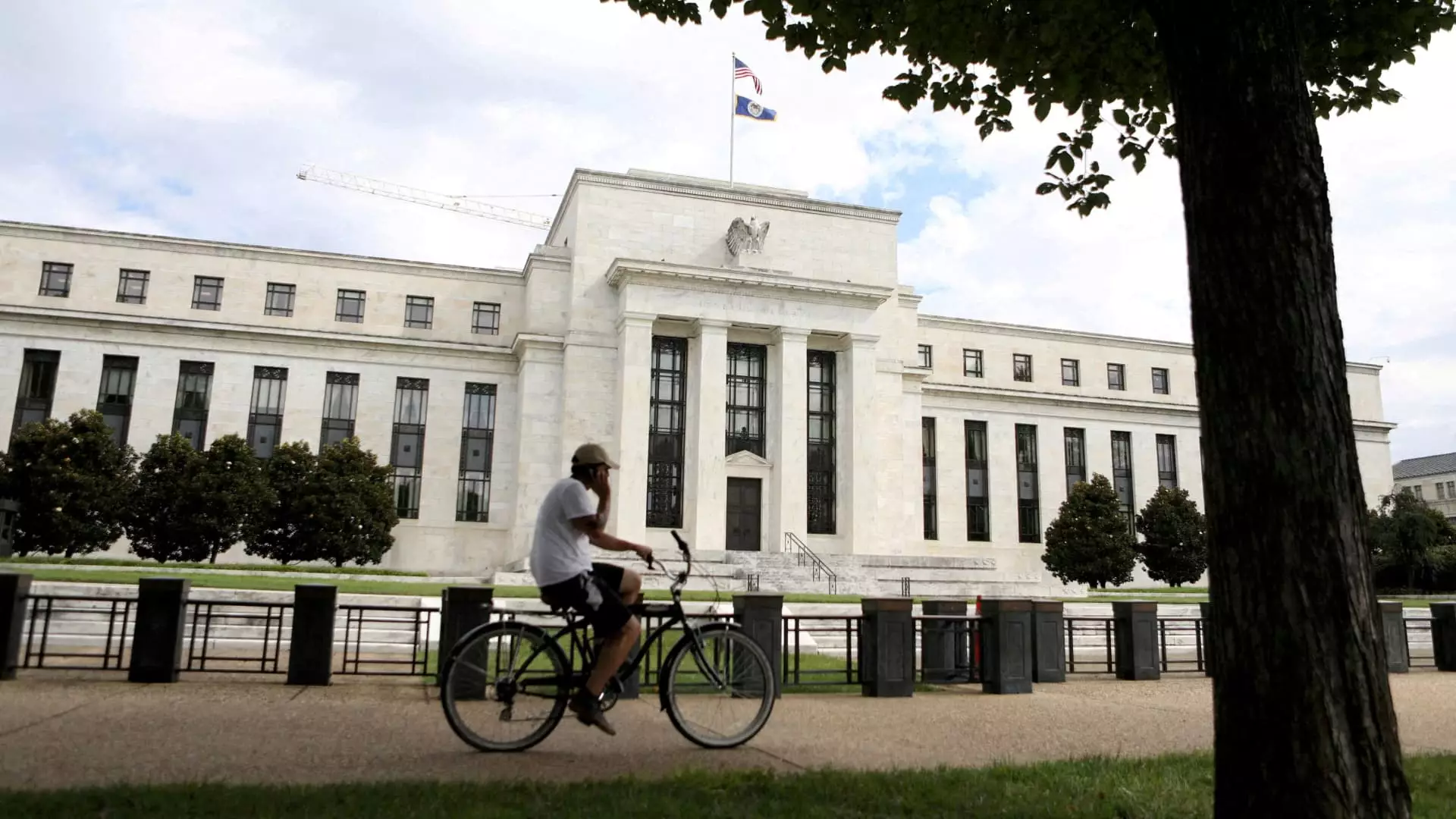In the eye of the economic storm, the Federal Reserve stands as a titan of autonomy, seemingly untouched by external pressures—most notably from political figures like former President Donald Trump. This detachment, while vital for the integrity of monetary policy, raises unsettling questions. In light of a surprising jobs report and persistent inflation, many Americans hope for relief through a cut in interest rates. Yet, the Fed’s decision-making remains ensconced in a bureaucratic fortress, immune to the cries of consumers whose lives are directly affected by its choices. This institutional rigidity can feel oppressive, especially for those grappling with real, tangible effects of high borrowing costs and persistent inflation.
The independence of the Fed is cherished as a safeguard against political meddling, but it also creates an alarming disconnection from the average American’s financial struggles. The statement from Fed Chair Jerome Powell about the separation of monetary policy from politics sounds noble in theory, but in practice, it reads as an echo in an empty chamber. It leads one to wonder—are we compromising the adaptability needed in uncertain economic times due to bureaucratic dogma?
The Perils of Executive Influence
Trump’s public comments on rate cuts, including his emphatic “NO INFLATION, THE FED SHOULD LOWER ITS RATE!!!”, highlight a crucial tension in U.S. economic policy. The President’s interventionist trade policies complicate the situation even more, introducing tariffs that potentially escalate living costs. When external factors, like a costly trade war, exacerbate inflation predictions, the Fed’s inaction feels like a passive endorsement of suffering.
One could argue that an independent Fed insulated from political whims is essential, yet how can it remain so if it imperils consumer welfare? High-interest rates disproportionately burden working Americans while shielding capital markets and wealthy investors from experiencing similar repercussions. It is a paradox: households are crushed under the weight of inflated prices for everyday goods while the Fed simmers quietly on the sidelines, almost as if it’s untroubled by the urgent need for change.
High Costs, Low Flexibility
The impact of static interest rates on consumer debt is palpable. With the average credit card rate hovering over 20%, the American populace finds itself in a chokehold as debts mount. Banks, wary of the economic climate’s turmoil, ratchet up rates rather than lowering them to ease financial pressure. This cautious approach imbues the lending sector with an air of distrust, leaving consumers with few options for affordable credit. The ideal of fostering economic growth through easier access to loans feels almost like a cruel mirage in this environment.
Consider the housing market: potential buyers are now facing steep mortgage rates, which remain stubbornly high despite minor year-to-date decreases. Affordability becomes fleeting as financial constraints make homeownership a distant dream for many. It’s a scenario where the fed policies clash head-on with the reality of American lives—caught in a limbo where rates should be reassessed in light of shifting economic conditions yet remain static.
The Burden of Tariffs
In a bid to bolster U.S. manufacturing, Trump’s tariff initiatives carry unforeseen consequences, raising prices across various sectors. The irony of attempting to protect American workers while inadvertently harming them through increased costs is shocking. The automobile industry provides a perfect illustration; while tariffs may theoretically defend domestic production, consumers are left confronting exponentially heightened car prices, making vehicle purchases increasingly unattainable.
In this chaotic economic landscape, the threat of tariffs looms large, skewing pricing structures and making budgeting a Herculean task for working families. This raises an essential question: at what point do the stated goals of protecting American industries begin to erode consumer freedoms and financial stability? In a nation that prides itself on the power of consumer choice, the heavy hand of government policy can easily tip the scales.
Hope Amidst the Chaos
In the face of these disheartening developments, an encouraging reality lurks—while the Fed’s interest rates remain stagnant, some online savings accounts offer relatively appealing yields of up to 4.5%. Though the Fed’s policies have little direct influence over these rates, it provides a slight salve for financially responsible savers who are doggedly trying to find a way forward.
The experience of financial insecurity has been jolted into the mainstream consciousness, forcing individuals to double down on emergency savings while grappling with the high-stakes game of debt repayment. While modern economic turbulence can feel daunting, it also carries the chance for adaptation and responsibility. The need to proactively augment personal finance strategies may yield not only survival but can ultimately empower people to foster new financial literacy that transcends the limitations imposed by slow-moving institutional power.
Amidst uncertainty, the resilience of the American consumer must neither be disregarded nor ignored—it is this very tenacity that will shape our future economic landscape, irrespective of how steadfast the Federal Reserve may choose to be.

